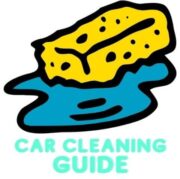Last Updated on September 27, 2023 by Chase Manhattan
Unsightly scratches on your sleek black plastic bumper can be a real eyesore. But don’t fret! With just a bit of know-how and the right tools, restoring your bumper to its original glory is well within your reach.
This guide is here to provide you with an easy step-by-step process on how to remove those pesky scratches from your black plastic bumper.
Whether you’re a seasoned DIY enthusiast or a beginner, we’ve got you covered. By the end of this, your bumper will look as good as new, and you’ll have added another valuable skill to your automotive care arsenal. Let’s dive in and get those scratches out, turning your bumper from drab to fab!
However, it’s important to know:
You can’t restore the original look of a black plastic bumper that has scratches. You can just smooth out the surface by cleaning it, buffing it out, and applying a restorer.
This will make the bumper look smoother but not restore it to its original look. Doing this improperly can lead to further blemishes, so it’s important to know how to fix car plastic scratches yourself.
Keep in mind, this may differ for deeper scratches like when your car gets keyed. If this is the case, we have a separate guide entirely for how to fix a keyed car.
Even though you can’t restore a plastic bumper, you can make them look better. You don’t have to replace the bumpers after every scratch, just maintain them in a good condition.
So keep reading for my step-by-step guide on how to remove scratches from black plastic bumpers.
Different types of scratches can be removed with other methods.
- How To Reset A Ford Instrument Cluster - June 4, 2022
- How To Remove Scratches From Black Plastic Bumpers [Guide] - June 4, 2022
- How To Get Water Stain Out Of Car Roof - June 4, 2022
[How to Remove Scratches From Exterior Car Trim Pieces]
Quick Navigation
Can Scratched Plastic Bumpers Be Restored
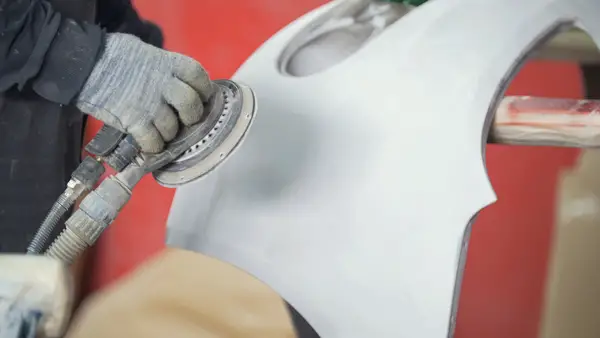
First of all, we need to make sure what kind of solution you are looking for and that following this guide won’t result in a brand-new plastic bumper because the cost of bumper repair can vary wildly, sometimes to the extremely expensive side of things.
If you want to even out the scratched areas with the rest of the bumper, this guide will help you. However, if you want the bumper to look like it was never scratched, you will need new bumpers. Much like rust removal and maintenance, it’s much easier to prevent the problem in the first place.
The reality is that the treated areas of the bumper will look a bit different from the rest undamaged parts. The scratches won’t be noticeable though.
If you only have a few scratches that you want to remove, this guide is for you. If the entire bumper is scratched, I recommend you get a new one.
[The Ultimate Beginners Guide to Remove Your Car Scratches]
How To Remove Scratches From Plastic Bumper
- Clean the bumpers
- Cut the bumpers with sandpaper
- Remove any contaminants
- Apply a plastic trim restorer
- Even out the surface
- Admire your handy work
Now, we’ll thoroughly explain what you need to do in order to remove scratches from the bumpers with each step.
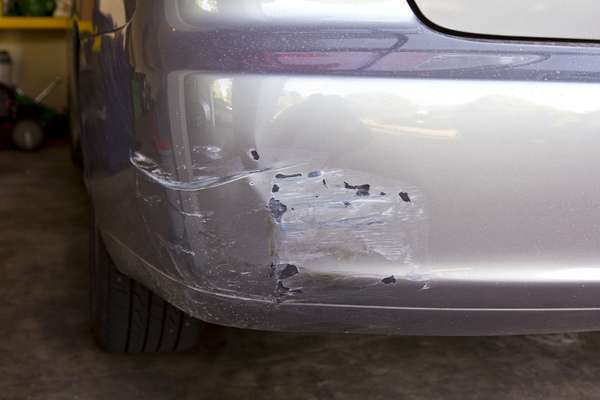
Clean The Bumpers
As mentioned in the beginning, you will be doing some buffing. In order to do that, you need to prep the surface.
The bumper should be clean of dirt and dust particles. The dirt can cause an even bigger scratch when you will be and waxing.
To clean the black plastic bumper, use the regular car shampoo you use for washing your car.
In fact, I recommend washing your entire car before continuing. As a general rule, when you are doing restoration work on the exterior, you first wash the car. Any leftover dirt or road debris can further damage your paint. You can use a foam cannon to do this quickly.
Pay extra care to the bumpers this time though.
[Guide to Drying Your Car With A Leafblower]
Cut The Bumpers With Sandpaper

You can call this buffing but it’s not actually buffing. That term is usually associated with buffing out a car’s paint job. Here, you are basically cutting or removing part of the bumper’s surface with the sand paper.
The grit of the sandpaper isn’t really a standard for a car bumper. So, it’s best if you have several grit sizes on hand.
I recommend having 80-grit, 150-grit, and 180-grit sandpaper on hand. This way you can change grit sizes, the finer the surface gets. Be mindful that you will normally start with a lower number grit, increasing to a higher number. This means the grit becomes finer as we go on. It will help you to learn about sandpaper grit beforehand.
Don’t cover the entire bumper with sandpaper, just the scratches and the affected areas close to it.
Once you have a fine smooth surface, you can wipe the bumper with a microfiber towel. Just clean off the residue from cutting the plastic.
[How To Wax A Car With A Buffer]
Remove Contaminants
You will be adding a restorer to the bumpers. For that to be effective, you need a surface clean of any contaminants.
So, this should be your next step. This is a prepping step. Don’t skip this; otherwise, the restorer won’t be efficient, and you will be left with a faded bumper. Most of your result will come from this preparation work, so pay attention.
To remove contaminants we usually an all-purpose cleaner that’s good at lifting debris off. You can also try using a degreaser. Both will work just fine.
After applying the cleaner, you will immediately notice that the bumper is looking better like this.
You will be surprised how much debris was on the bumper without you even noticing.
[Common Causes of Car Scratches That Piss You Off]
Apply A Plastic Trim Restorer
Fortunately, there are dedicated car products that are made specifically for this purpose. Most cars have some kind of plastic along with their paint job. So, it makes sense to have the right product like this.
The right product you need here is called a plastic restorer, which is made specifically for black plastic trim. There are plenty of brands you can use here. I recommend going with trusted brands and manufacturers.
Each plastic trim restorer has a different way of applying it. The instructions should be on the bottle, this will typically be the best way to achieve the best results. Follow these to the letter for maximum efficiency.
Make sure to not apply the restorer to parts that you haven’t buffed, undamaged parts, or the otherwise surrounding area. If you are worried you will apply on the wrong parts, use masking tape. Just isolate the parts that need to be restored with the masking tape.
Even Out The Surface
After you are done with the plastic trim restorer, the job is still not finished. The restorer is basically painting, so you are adding a layer of paint to the bumper.
As is the case when you apply a layer, there will be mountains on the surface. Even though these curves can be unnoticeable, it’s best to smoothen out the surface.
So, you will need to do a polishing touch on the bumpers. Again, there are dedicated products for polishing a black plastic bumper.
Get a plastic polish kit and you should be good to go. A steady hand is key here.
Are Simple Buffer Scuffs Easier To Remove?
Yes, simple bumper scuffs and minor scratches are generally easier to remove from a car’s bumper. They often haven’t fully penetrated the clear coat of the vehicle’s paint, like deep scratches would, which is the car’s primary defense against scratches.
You can usually remove them using a variety of methods such as rubbing compounds, wax, scratch removers, or even household items like toothpaste. It’s always recommended to start with a mild method and gradually move to more aggressive solutions if the scuff or scratch is stubborn.
It’s important to ensure the surface is clean before starting the process to prevent further damage. For faint scratches, you can also consider buffing out the scratch with sandpaper, then wiping the surface with a microfiber cloth and applying polishing.
Can You Remove Paint Marks from Plastic Bumpers?
Yes, it is possible to remove paint marks from a black plastic bumper. The process typically involves the use of a plastic-safe solvent, such as rubbing alcohol or a specialized automotive paint remover.
Once the paint is removed, the affected area should be thoroughly cleaned to remove any remaining solvent. It’s also recommended to apply a plastic conditioner or protectant after cleaning to help restore the plastic’s original shine and prevent future stains.
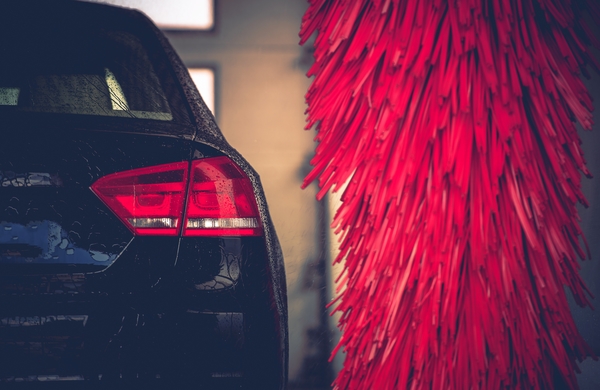
[How to Get Leaf Stains off Your Paint]
Black Plastic Bumper Scratch Repair Cost
The cost of repairing your black plastic bumper greatly depends on how in depth you would like to go. From our guide, you can see that these materials are relatively cheap but there are other ways to approach it. You can use a heat gun before sand papering the bumper as it will soften the material so it can be more easily adjusted and smoothed out. Do factor in the cost of a heat gun, the black plastic bumper polish, and other small miscellaneous materials, and you’ll probably come inside the range of $80-$150 USD.
Should I Replace My Scratched Plastic Bumper
This begs the question: Is all of this labor worth it? Should I just buy a new bumper? Well, this is up to you to decide.
In my opinion, replacing a plastic bumper with 1-2 minor scratches is not worth it. If the scratches bother you that much just restore the bumper. If the entire bumper is damaged though, replacing it is a good idea.
If you want an upgrade in bumpers, then, of course, replacing it makes sense. Sometimes this can be the only option.
[How To Dry A Car Properly Without Scratching It]
How to Find the Right Car Exterior Plastic Scratch Remover
As you know, a car’s plastic surface – of any kind – can become damaged in one way or another so it’s important to know how to fix them but also to have the right tools for the job. I prefer to use a plastic restorer, like the Car Guys Plastic Restorer kit for small plastic car scratches.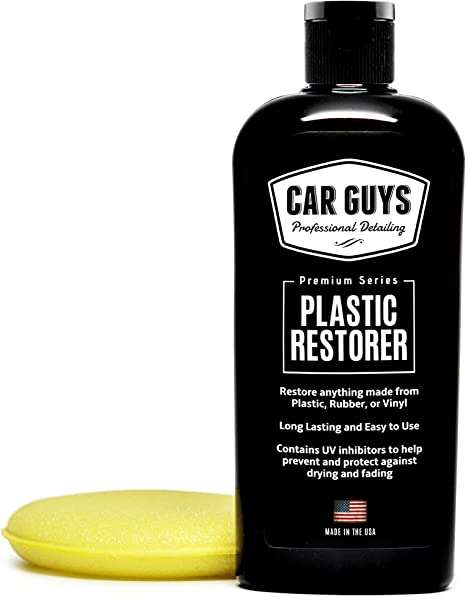
Conclusion
All in all, it is sometimes necessary to replace a plastic bumper when it is damaged. They are not always able to be repaired but knowing how to remove scratches from black plastic bumpers is an important skill to have if you’re trying to save some money.
Related Questions And Other FAQs
Can You Buff Out Scratches On A Plastic Bumper
Yes, you can buff out scratches on a plastic bumper. Use sandpaper to cut the plastic and even out the surface. Follow the preparation steps outlined above. If it is too severe, be aware that you may need to replace your plastic bumper.
Does Toothpaste Remove Scratches From Plastic
It is possible to use toothpaste to remove scratches from plastic surfaces. This is an easy and cost-effective way to restore the original appearance of scratched plastic surfaces.
First, clean the surface of the plastic to remove any dirt and dust particles. Then, apply a small amount of toothpaste on the scratched area. Use a damp cloth to rub the toothpaste into the affected area in a circular motion. After a few minutes of rubbing, wipe off the excess toothpaste with a clean and damp cloth.
The scratches should have begun to diminish, however, if they are still visible, repeat the process again. After the scratches have been removed, clean the plastic surface with a damp cloth to remove any residue left behind.
The effectiveness of using toothpaste to remove scratches from plastic will depend on the type of plastic surface and the severity of the scratch. If the scratch is too deep, it is unlikely that toothpaste will be able to completely remove it.
Additionally, toothpaste should not be used to remove scratches from plastic surfaces that are painted or have a protective coating. In such cases, it is best to consult a professional for assistance.
Overall, toothpaste can be used to remove scratches from plastic surfaces, providing the scratches are not too deep.
Does toothpaste remove scratches from plastic? Yes, it does.
Can You Repair Plastic Scratches With A Heat Gun?
Yes, you can use a heat gun to help restore your black plastic bumpers. The heat gun would be applied right before using the sand paper. By applying heat to the bumper, you’re allowing the plastic to soften so that it’ll be easier to work by hand.
Can You Restore Faded Plastic Trim?
Yes, you can restore faded plastic trim with a multitude of products, made specifically for this, that can be found at your local auto parts store. I recommend the Meguiar’s brand when available. However, I recommend investigating the replacement cost for the plastic trim pieces – this will occasionally be a cheaper option when time is considered.
